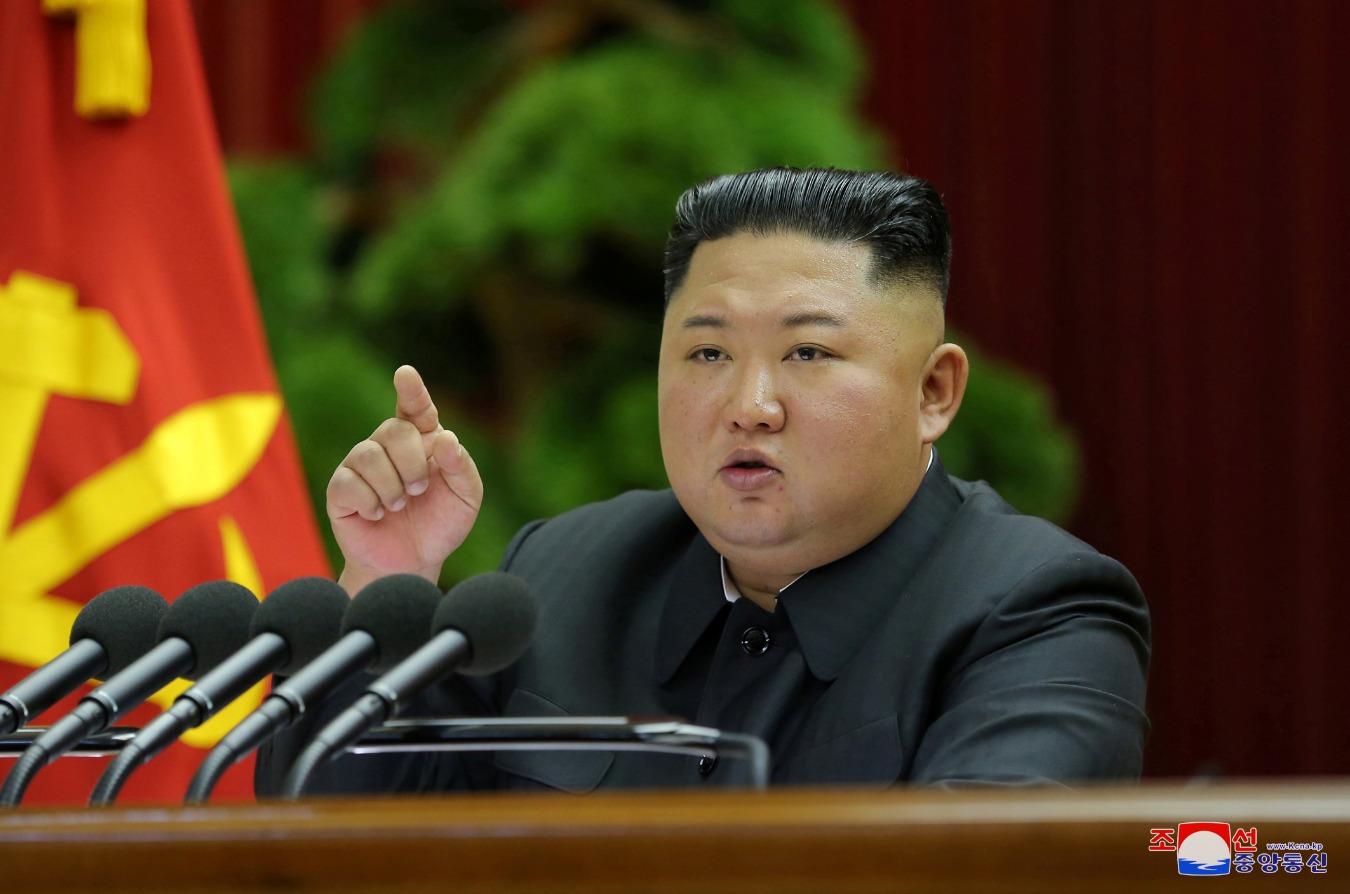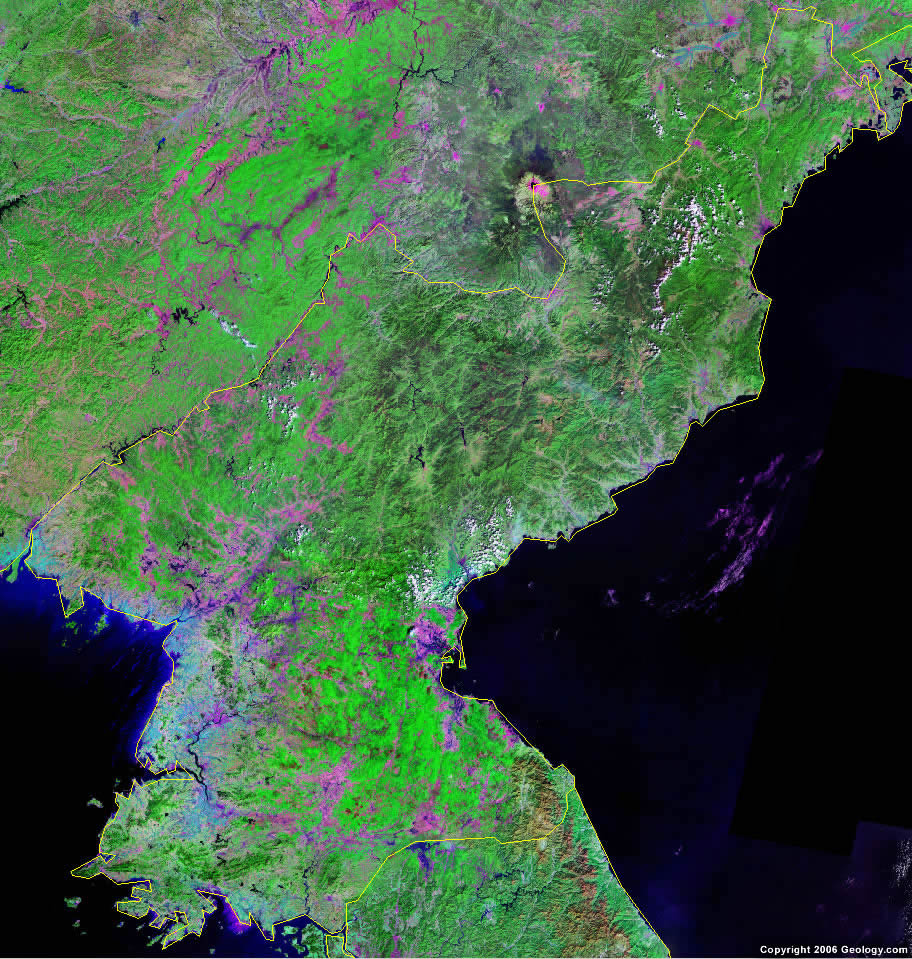North Korea Resources - North Korea has all the world's most famous natural resources. About 200 minerals are estimated to have economic value. The most important are iron and coal, although more emphasis is placed on the mining of gold, magnesite (magnesium carbonate), lead and zinc. Other abundant elements include tungsten, graphite, barite (barium sulfate), and molybdenum.
Large deposits of stainless steel are mined in North and South Hwanghae, South P'yŏngan and South Hamgyŏng provinces, while deposits in Musan in North Hamgyŏng Province are low. Rich deposits of anthracite (black coal) occur along the Taedong River—especially in Anju, north of P'yŏngyang—and near Paegama in the Yanggang region. There is also a small amount of lignite (brown coal) in the northeast and in Anju. The North Korean deposit, the largest in the world, is located in Tanch'ŏn, South Hamgyŏng Province.
North Korea Resources

Industrial development affects the electricity supply in the country. During the Japanese occupation, electricity was generated along the Yalu River and its mouth. Electricity generation still depends on electricity, but electricity is becoming more important due to low construction costs and the unreliability of hydropower during dry periods. However, since 1990, electricity production has fallen to critical levels due to the general failure of the national economy.
Kim's Lost Fortune: North Korea Has $10 Trillion Resources It Can't Tap
The industrial sector was organized into government enterprises and industrial enterprises, with industrial enterprises limited to handicraft production, water treatment and other minor activities. The most important industries are the iron and steel industry, engineering, chemical and textile industries. Iron and steel production was originally concentrated in Songnim and Ch'ŏngjin, but expanded to include a large integrated mill in Kimch'aek. Industrial and agricultural industries were established in Kangsŏn near P'yŏngyang and many other cities, including Hŭich'ŏn. Chemical production focuses on fertilizers and petrochemicals, most of which are produced in Anju Province, north of P'yŏngyang. The textile industry was based in P'yŏngyang, Sinŭi, and Sunch'ŏn. Other products include cement, weapons, automobiles, glass, ceramics, and some commodities (mainly clothing and processed foods).
The official currency is the North Korean Won and the only issuing bank is the Central Bank of the Democratic People's Republic of Korea. It accepts all national currency and precious metals and provides working capital to government agencies. There are many other state-owned banks that are under the supervision of the central bank. Among them is Obchodná banka, which manages all foreign transactions and, if necessary, foreign currency. From the late 1980s, small amounts were offered by cooperative banks, and later personal and business savings accounts for non-residents were accepted. In an effort to regain control of money and markets, the government in late 2009 changed the winning to 1 percent of its value (eliminating almost all savings), closed the market, and banned the use of money. These measures caused economic problems and provoked rare public protests by citizens.
Tourism is strictly regulated by the government. Many visitors are from Asia, especially China, with which North Korea has close relations. Tourists, especially from the West, have their movements strictly restricted along with North Korean leaders. The department has developed in a new way since 1998 by receiving organized paying tourists from South Korea (including various countries including Western tourists) in the northern complex of Kŭmgang and Kaesŏng industrial regions, two special economic zones of the city. However, these two projects depend on the relationship between the two countries.
Foreign trade grew and gradually expanded. At first, the trade took place only in the Soviet Union and China, but since the 1960s, a growing number of countries have allowed it. Business partners are China, South Korea, Russia, Japan, India and Thailand. The private sector supports business in South Korea. A free trade zone, another of North Korea's special economic zones, was established in the late 1990s in Rajin-Sŏnbong (today Rasŏn), in the northern province of North Hamgyŏng. Mainly beverages, food and other agricultural products, oil, machinery and eggs are imported. Exports include live animals and agricultural products, textiles and clothing, machinery and petroleum and petroleum products.
There's A $10 Trillion Resource That North Korea Can't Tap
In general, the transportation system in North Korea is slow because the infrastructure is exhausted and energy supplies are limited. Since the end of the 20th century, few new roads or railway lines have been built. With the economic downturn in the 1990s, the demand for transport networks stopped. It later escalated during this period as many people were forced to leave their homes in search of food and income, putting pressure on the already poor transport infrastructure. Although free travel is not allowed in North Korea (a special travel permit is required for this purpose), many North Koreans move around the country illegally.
Railways are the main means of transport. The main railway system runs in a north-south direction, parallel to the sea, with branches to the river valley. Due to the high mountains, there is only one east-west railway between P'yŏngyang and Wŏnsan. The West Coast Line runs from Kaesŏng on the South Korean border to Sinŭi on the Chinese border, connecting the capital cities. From this main line, a branch line from P'yŏngyang in the southwest to Namp'o connects the iron and manufacturing area. Another line runs north from P'yŏngyang to Manp'o on the Yalu River, connecting the western and northeastern regions of China. The main railway on the east coast runs from Wŏnsan in the north to Rasŏn and then to Namyang on the Chinese border. A railway line built at the beginning of the 21st century enabled the movement of cargo between Rasŏn and the Russian port of Khasan. Many branches serve rural and mining areas.
Road transport is not as important as rail because there are fewer cars. The main road connects the railway lines. The expressway connects P'yŏngyang with Wŏnsan, Namp'o and Kaesŏng. However, many roads are not paved.

River transport plays an important role in transporting goods, minerals and passengers. The most important rivers used for shipping are the Yalu, Taedong, and Chaeryŏng. The main port on the west coast is Namp'o - port of entry to P'yŏngyang-Haeju and Tasa; the eastern ports are Wŏnsan, Hŭngnam, Ch'ŏngjin and Rajin.
N. Korea Estimated To Have Us$2.79 Trillion Worth Of Mineral Resources
The Air Force manages air operations. Flights are maintained between major cities, with international connections linking P'yŏngyang with Beijing and Moscow. Sunan International Airport is located northwest of P'yŏngyang; The main domestic airports are located at Hamhŭng, Ch'ŏngjin and Wŏnsan North Korea, known as the Democratic People's Republic of Korea (DPRK), is located north of the demarcation line established by the Korean Armistice Agreement of July 1953. Total. The area is 123,138 square kilometers, which is about 55.8% of the entire Korean Peninsula, which is 223,404 square kilometers. The population of North Korea is about 25,115,000 (2016 estimate), with a population density of 199.3 people per square kilometer. That's almost 40% of South Korea, whose population is 499.1 people per square kilometer.
Oriented to the East River on the east coast and the Yellow Sea on the west coast, North Korea borders the northeastern region of China along the Amnokgang (Yalu River) and Dumangang (Tumen River) rivers and the Russian Siberian coast. Dumangang. Its border with China is 1,353.2 kilometers long and has bridges such as the Amnokgang Bridge, which allows road and rail traffic between Sinuiju in North Korea and Dandong in China. North Korea shares a border with Russia that is 16.2 kilometers long and is connected by a railway bridge between North Korea's Dumangang station and Naseon (Rason) and Khasan stations across the border with Russia. In the south, the border between North Korea and South Korea is on the demarcation line within the DMZ. Since 1945, when Korea was liberated from Japan, North Korea has undergone many structural changes. As of 2014, it has one regionally controlled city of Pyongyang, two special cities (Naseon and Nampo, both developed for economic purposes), and nine provinces.
One of the most famous features in the North Korean region is the Nangrimsanmaek (Nangrim Mountain) North-South Run, which is part of the Baekdudaegan (a traditional route that represents the mountain back on the Korean Peninsula). These areas are also part of Baekdudaegan: Gangnamsanmaek, Jeoguryeongsanmaek, and Myohyangsanmaek in the west, and Hamgyeongsanmaek and Bujeollyeongsanmaek in the east, and Hamgyeongbukdo and Hamgyeongnam-do. The northern and eastern parts of North Korea are mostly mountainous and mountainous, while the southern and western parts are mostly plains and plains.
Because of this topography, the rivers that flow along the Yellow River, including the Amnokgang, Daedonggang, Cheongcheongang, and Yeseonggang, often pass through mountains with gentle slopes when they reach the plains. In contrast, rivers that flow into the East Sea, such as Dumangang and Namdaecheon, are straighter and shorter.
Geography Of Korea
What resources does north korea have, resources of north korea, south korea natural resources map, korea institute of geoscience and mineral resources, south korea resources, korea water resources corporation, korea resources, north korea natural resources map, south korea natural resources, resources in north korea, north korea natural resources, korea resources corporation


0 Comments